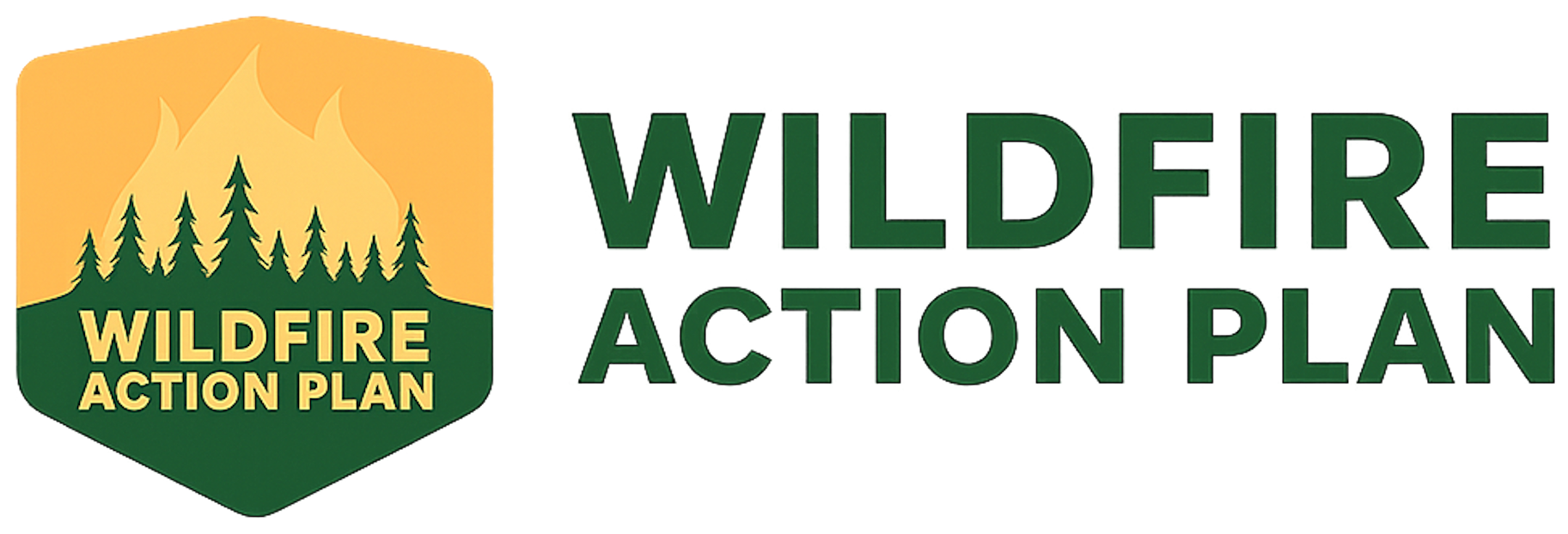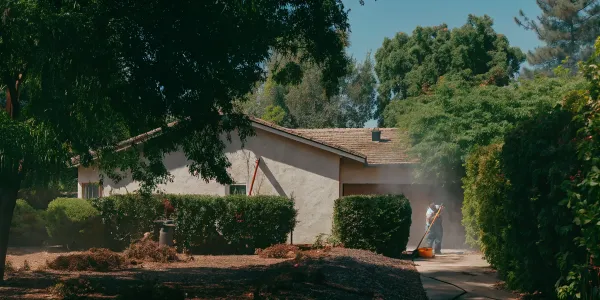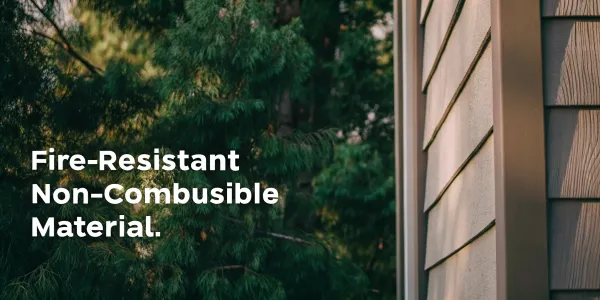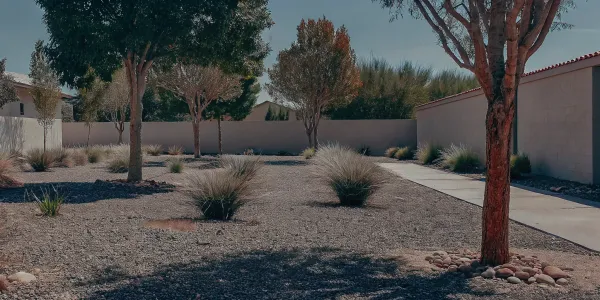Wildfire Prevention 101: A Homeowner's Guide
Wildfire prevention starts at home. Get practical steps to protect your property, lower your risk, and keep your family safe with this homeowner’s guide.
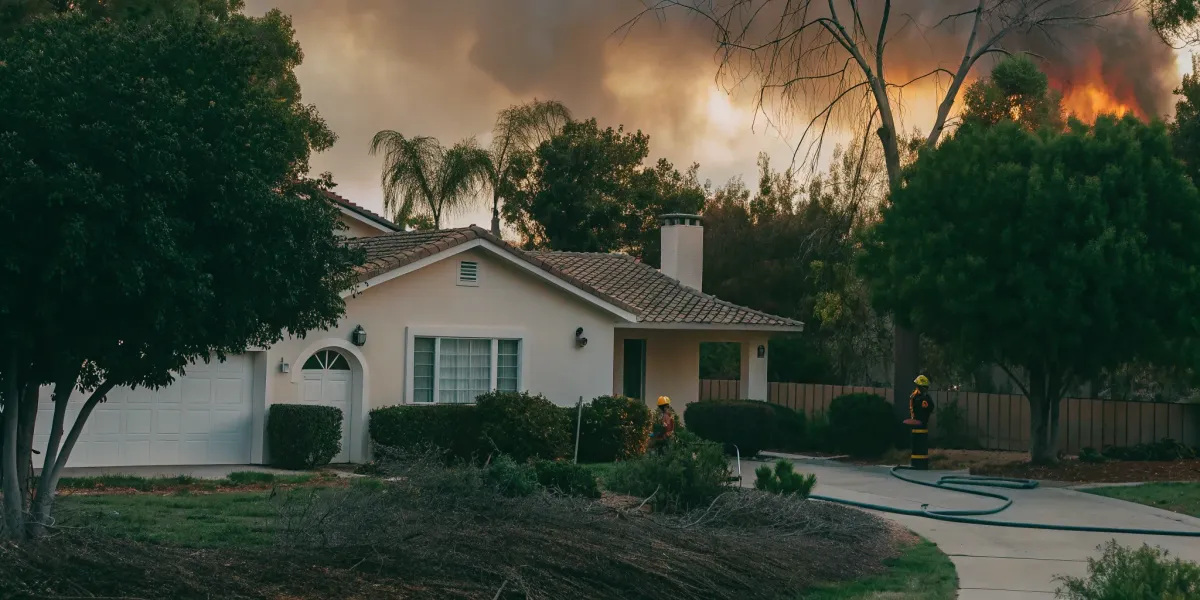
You’ve seen the photos after a major fire: a neighborhood in ashes, with one or two homes left standing, seemingly untouched. This isn't just a miracle or random luck. More often than not, it’s the direct result of smart, deliberate preparation. The dangerous myth that there’s nothing you can do to save your home from a catastrophic wildfire paralyzes homeowners into inaction. The reality is that science-backed wildfire prevention strategies can dramatically increase your home’s chances of survival. This guide will show you how those homes make it through, breaking down the essential steps for creating defensible space and hardening your home against the primary threat: flying embers.
Key Takeaways
- Focus on Your Immediate Surroundings: The most effective way to protect your home is by managing the area right around it. This means creating defensible space by clearing flammable vegetation and hardening your home's structure—especially the roof and vents—to block flying embers.
- Plan Your Escape Before You Need It: A solid evacuation plan is your family's most important safety tool. Practice your escape routes, pack a "go-kit" with essentials like documents and medication, and make sure everyone knows the family communication plan.
- Build a Safer Community, Together: Wildfire defense is a team sport. Work with your neighbors to organize cleanup days, create a simple neighborhood alert system, and share resources to make your entire community more resilient and attractive to insurers.
Wildfire Prevention 101: What You Need to Know
Understanding how wildfires start and spread is the first step toward protecting your home and family. When you feel overwhelmed by news of another destructive fire or a non-renewal notice from your insurer, it’s easy to feel powerless. But the truth is, many homes survive wildfires because their owners took proactive steps to reduce their risk. Prevention isn’t just about large-scale forest management; it’s about the practical, tangible actions you can take on your own property.
This guide is designed to cut through the noise and give you clear, actionable information. We’ll start with the fundamentals: what causes wildfires, the common myths that can lead to inaction, and how to understand your specific risk factors. Knowing these basics will give you the foundation you need to make informed decisions. The goal isn't to cause alarm but to empower you with knowledge. By understanding the threat, you can focus your energy on the solutions that make the biggest difference for your home, your family, and your peace of mind.
What Really Causes Wildfires?
While lightning strikes can and do start fires, they aren’t the primary culprit. According to the U.S. Department of the Interior, nearly nine out of ten wildfires in the United States are caused by humans. These aren't necessarily acts of arson; most are accidents that could have been prevented. Common causes include unattended campfires, sparks from equipment like lawnmowers or chainsaws, burning debris on a windy day, and carelessly tossed cigarettes. This is actually good news. It means that individual actions and awareness can have a massive impact on preventing a catastrophe in your community. Simple caution and following local fire regulations can stop a wildfire before it ever begins.
Debunking Common Wildfire Myths
Two dangerous myths often paralyze homeowners. The first is that there’s a single, simple fix for large-scale fires, like logging. The reality of forest health and fire behavior is far more complex. The second, more personal myth is the feeling that there’s nothing you can do to protect your property. This couldn't be further from the truth. As fire safety experts confirm, removing flammable hazards from the area immediately surrounding your home can dramatically increase its chances of survival. Your home’s construction materials and the landscaping choices you make are powerful tools in your defense. You have more control than you think.
Know Your Area's Risk Factors
Living in a beautiful, natural area often comes with an increased risk of wildfire, especially in places like California. The reasons for this are complex, involving a warming climate, decades of fire suppression policies that allowed fuels to build up, and more homes being built in the Wildland-Urban Interface (WUI)—the zone where development meets undeveloped wildland. Understanding your specific location’s risk is critical. Is your home on a steep slope? Is it surrounded by dense, dry vegetation? Knowing the answers helps you prioritize your prevention efforts and create a more effective Wildfire Action Plan.
The True Cost of a Wildfire
The impact of a wildfire extends far beyond the flames. These events cause devastating damage to homes, natural habitats, and entire communities. For families, the cost isn't just financial; it's the emotional toll of losing a home, cherished belongings, and a sense of security. In the aftermath, homeowners face the daunting tasks of rebuilding their lives and navigating a complicated insurance landscape that is becoming increasingly difficult. The rising frequency of major fires has strained the insurance market, leading to non-renewals and soaring premiums. Investing in prevention isn't just about protecting property—it's about safeguarding your financial future and your family's well-being.
How to Create a Fire-Resistant Property
Taking control of your property’s wildfire risk can feel overwhelming, but it doesn’t have to be. The goal isn’t to build an indestructible fortress; it’s about giving your home the best possible chance of survival by making smart, strategic improvements. By focusing on a few key areas, you can dramatically reduce your home’s vulnerability to embers and flames, which are the primary threats in most wildfires. These steps are not just about protection—they are also critical for maintaining your home insurance in a tough market. Insurers are looking for homeowners who are actively managing their risk, and the actions you take on your property are the most powerful proof you can offer. Think of this as a series of practical projects that empower you to protect your investment and your family. It's about shifting from a reactive mindset of fear to a proactive one of preparedness. Each small change, from clearing brush to installing a new vent screen, contributes to a larger shield of safety around your home. This guide will walk you through the most effective strategies, breaking them down into manageable steps so you can start making a real difference right away.
Establish Your Defensible Space
Creating defensible space is about building a buffer zone around your home. This area, clear of flammable vegetation and materials, can slow or even stop a wildfire from reaching your house. It also gives firefighters a safe area to work if they need to defend your home. The key is to think in zones, starting from your house and moving outward. The first five feet around your foundation should be an ember-free zone, using non-combustible materials like gravel or concrete. From there, you can create defensible space by thinning trees, removing dead plants, and keeping grass mowed low. This isn’t about clear-cutting your property; it’s about thoughtfully managing the fuel that a fire could use to advance.
Harden Your Home: The Essentials
While defensible space addresses the area around your home, home hardening focuses on the structure itself. The goal is to make your house less likely to ignite from flying embers, which are a primary cause of home loss during wildfires. Start with the most vulnerable parts: your roof and vents. A Class A fire-rated roof is your best defense. Vents for attics, crawl spaces, and dryers should be covered with fine metal mesh (1/8-inch) to block embers from getting inside. Dual-pane windows are also more resistant to breaking from heat. Your wildfire action plan should include a thorough inspection of these weak points and a strategy for upgrading them with ignition-resistant materials over time.
Choose Fire-Resistant Landscaping
Your landscaping can either act as fuel for a fire or as a barrier against it. The right plants and materials can make a huge difference. When you plan your landscaping, choose high-moisture, low-resin plants and avoid flammable options like juniper, cypress, and dense ornamental grasses. Create space between shrubs and trees to prevent fire from climbing from the ground into the canopy. For fences, mulch, and decks within five feet of your home, use non-combustible or ignition-resistant materials. A well-maintained, fire-smart landscape not only reduces your risk but also adds to your home’s beauty and value, proving that safety and aesthetics can go hand-in-hand.
Maintain and Document Your Efforts
Creating a fire-resistant property is an ongoing process, not a one-time project. Regular maintenance is essential. This means cleaning your roof and gutters of pine needles and leaves, clearing dead vegetation from your yard, and inspecting your home hardening features each season. Just as important is documenting every step you take. Keep receipts for ignition-resistant materials, take before-and-after photos of your defensible space work, and log your annual maintenance activities. This documentation is invaluable when speaking with your insurance agent, as it provides concrete evidence of your commitment to risk reduction. A tool like the Wildfire Action Plan can help you track your progress and keep all your important information in one place.
Your Homeowner's Prevention Checklist
Beyond hardening your home and managing your landscape, wildfire prevention is about your daily habits and routines. Many devastating fires start from simple, preventable accidents. This checklist covers the essential practices that can dramatically reduce the risk of a fire starting on or near your property. Think of these not as one-time tasks, but as ongoing habits that become second nature, especially during high-risk fire seasons. Integrating these steps into your life helps protect your home, your family, and your entire community.
Use Equipment and Tools Safely
It’s easy to forget that everyday yard work can pose a fire risk. A metal lawnmower blade hitting a rock can create a spark, and that’s all it takes to ignite dry grass. To use outdoor tools safely, operate them before 10 a.m. when temperatures are cooler and humidity is higher. Avoid using equipment on hot, dry, or windy days. Before you start, clear the area of rocks and ensure your tools, from weed-eaters to chainsaws, are in good working order with functioning spark arrestors. Keep a fire extinguisher or a charged water hose nearby just in case a spark does catch. These simple precautions can prevent a routine chore from turning into a disaster.
Practice Fire-Safe Outdoor Activities
Whether you’re enjoying a backyard barbecue or clearing debris, outdoor activities require constant vigilance. If you have a campfire or fire pit, build it in a clear area away from flammable materials like overhanging branches or dry vegetation. Never leave a fire unattended, and before you walk away, make sure it is completely out. Douse it with water, stir the ashes, and feel it with the back of your hand to ensure it’s cold. Always check for local burn bans or restrictions before burning yard waste, as conditions can change quickly. Following these tips to prevent wildfires ensures your recreational activities don’t become a source of ignition.
Monitor High-Risk Weather Conditions
Staying aware of the weather is one of the most critical parts of wildfire prevention. Pay close attention to Red Flag Warnings, which are issued when conditions are ideal for extreme fire behavior—hot temperatures, low humidity, and strong winds. During these periods, you should be on high alert and avoid any activity that could create a spark. Make it a habit to check local wildfire risk and weather forecasts daily during fire season. Sign up for emergency alerts from your local county or fire department. Knowing when the danger is highest allows you to adjust your activities and be prepared to act if a fire does break out nearby.
Prepare Your Emergency Go-Kit
When an evacuation order is issued, you won’t have time to search for important documents or essentials. Every household needs a well-stocked emergency "go-kit" ready at a moment's notice. This kit should contain copies of important papers like insurance policies and identification, medications, a first-aid kit, water, non-perishable food, and a portable radio. Don’t forget items for pets, like food and leashes. It’s also wise to keep basic fire suppression tools, such as a shovel and a fire extinguisher, accessible in your vehicle or garage. You can find a comprehensive checklist for your go-kit to ensure you have everything your family needs to leave safely and quickly.
Plan and Practice Your Evacuation
A plan is only effective if you practice it. Your family’s Wildfire Action Plan should include at least two evacuation routes from your home and neighborhood. Designate a meeting place for your family in case you get separated, and create a communication plan that includes an out-of-state contact everyone can check in with. Share your plan with your neighbors to help build a more prepared community. Don’t just write it down—run through it. Drive the routes, time them, and discuss what each person’s responsibility is. A well-rehearsed plan reduces panic and confusion when every second counts. You can start your free wildfire plan now to create a clear, actionable strategy for your family’s safety.
Build a Fire-Safe Community
Protecting your own home is the critical first step, but wildfire doesn't stop at property lines. True resilience is built when neighbors work together. A fire-safe community is one where everyone understands the shared risk and takes collective action to reduce it. When an entire neighborhood is prepared, it not only creates a stronger defense against embers and flames but can also make the area more attractive to insurers. By pooling resources, sharing information, and creating a unified plan, you can make your entire community safer and more prepared for whatever comes next. It’s about turning individual efforts into a powerful, collective shield.
Create a Neighborhood Action Plan
A neighborhood action plan is your community’s shared playbook for wildfire safety. Start by getting together with your neighbors to identify your collective risks. Maybe it’s a shared canyon overgrown with dry brush or a series of properties that back up to wildland. From there, you can work with your local fire department to develop a strategy. This could involve organizing community cleanup days to clear flammable debris from common areas or helping older residents create their defensible space. The goal is to create a unified front where every home is a link in a chain of defense. A great place to start is by looking into programs like Firewise USA®, which provides a framework for organizing your community.
Set Up a Community Alert System
When a wildfire threatens, every second counts. While official channels are your primary source of information, a neighborhood-level alert system can provide crucial, real-time updates. First, ensure everyone is signed up for official county and state alerts, like those from CAL FIRE. Then, create a simple, secondary system just for your neighborhood. This could be a group text chain, a WhatsApp group, or a simple phone tree for those who aren't as tech-savvy. This network can be used to quickly share observations—like the smell of smoke or the sight of emergency vehicles—and ensure everyone has received official evacuation warnings. It’s a simple way to make sure no one gets left behind.
Organize Community Prevention Programs
An educated community is a prepared community. Organizing prevention programs can empower your neighbors with the knowledge they need to protect their homes and families. Consider inviting a representative from your local fire department or a Fire Safe Council to speak at a neighborhood meeting. They can offer expert advice on topics like home hardening, creating effective defensible space, and building an emergency go-kit. You can also create and share resources, like a simple checklist for seasonal property maintenance, through a neighborhood email list or social media group. These efforts help build a shared culture of preparedness, making safety a regular conversation instead of an afterthought.
Coordinate Local Resources
Many hands make light work, especially when it comes to large-scale fire prevention projects. Coordinating resources is a practical way to get more done with less individual effort. Start by creating a list of skills and equipment available within your neighborhood. Someone might have a chainsaw and the expertise to use it safely, while another has a large truck perfect for hauling away cleared vegetation. By pooling resources, you can collectively rent a wood chipper for a weekend or hire a contractor to clear a hazardous common area at a group rate. Working with fire professionals can also help you prioritize projects that will have the greatest impact on reducing your community’s overall risk.
Find Local and State Incentives
Funding is often available to help communities become more fire-resilient; you just have to know where to look. Many state and local agencies offer grants and financial assistance for wildfire prevention projects. For example, CAL FIRE provides grants to at-risk communities to help pay for fuel reduction, fire prevention planning, and public education. Designate a person or a small committee in your neighborhood to research these opportunities. Securing a grant can fund major initiatives like clearing large tracts of land or hosting a community-wide chipping day, accomplishing critical safety work without placing the entire financial burden on homeowners. It’s a powerful way to make significant safety improvements to your entire neighborhood.
Your Action Plan for High-Risk Seasons
When fire season is at its peak, your focus should shift from long-term projects to daily vigilance. This is the time to fine-tune your preparations and ensure your household is ready to act at a moment's notice. Integrating a few key habits into your routine can make all the difference when minutes count.
Check Fire Weather Daily
Start your day with a quick check of the local fire weather forecast. This goes beyond just the temperature; you’re looking for information on wind speed, humidity levels, and official Red Flag Warnings. These warnings indicate critical fire weather conditions where a simple spark could lead to a major wildfire. Knowing the daily risk level helps you make smarter decisions, like postponing yard work that involves machinery. You can find reliable, up-to-date information from the National Interagency Fire Center and by enabling local emergency alerts on your phone.
Follow Daily Safety Routines
Small, consistent actions are your best defense against accidental ignitions. Make it a habit to clear dead leaves from your deck and gutters, especially on hot, windy days. If you use a grill, ensure the coals are completely cold before you dispose of them. Avoid parking your car on dry grass, as a hot exhaust pipe can easily start a fire. These simple routines reduce the chances of a stray ember or spark finding fuel on your property, creating a safer environment for you and your neighbors.
Confirm Your Family's Communication Plan
A plan only works if everyone knows it. During high-risk seasons, take five minutes to review your family’s communication plan. Does everyone have the out-of-state contact’s number saved? Do your kids remember the two designated meeting spots—one nearby and one outside the neighborhood? Confirming these details ensures that if you get separated during an evacuation, everyone knows how to reconnect. This quick check-in keeps the plan fresh in everyone’s mind and helps reduce panic in a real emergency.
Keep Insurance Documents Accessible
When an evacuation order is issued, you won’t have time to search for important papers. Keep digital and physical copies of your critical documents, including your home insurance policy, home inventory, and personal identification. Store digital copies in a secure cloud service and keep physical copies in a fireproof box or your emergency go-kit. It’s also crucial to be signed up for local emergency alerts. These systems provide official, real-time information directly from emergency responders, giving you the time you need to leave safely.
Review Your Emergency Plan
Your emergency plan is a living document, not a one-and-done checklist. Pull it out and do a quick review. Are your primary and secondary evacuation routes still viable, or is there new construction blocking a road? Is your go-kit still stocked with fresh water, batteries, and medications? A quick review ensures your plan is still practical and ready for action. If you haven't built a comprehensive strategy yet, creating a personalized Wildfire Action Plan is the most important step you can take to protect your family and property.
Adopt Long-Term Prevention Habits
Protecting your home from wildfire isn't a one-time project; it's about building smart, long-term habits. These practices help ensure your family is prepared year-round. Integrating them into your routine reduces risk and builds a foundation of safety you can rely on when it matters most.
Get Involved in Community Education
Your knowledge about wildfire risk is powerful—especially when you share it. Participating in local fire safety campaigns or talking to neighbors about preparedness creates a ripple effect. When more people understand the risks, the entire community becomes safer. You don't have to be an expert. Sharing a helpful article or organizing a neighborhood cleanup are simple ways to spread the message and build a collective defense against wildfire threats.
Use Technology to Stay Prepared
Your phone is a critical safety tool. Ensure your family is signed up for emergency alerts from your local county, which send real-time information like evacuation warnings. Don't wait for a fire to be nearby. Take a few minutes now to find your local alert system online and register every phone in your household. These official notifications are the most reliable way to get clear instructions when you need them most, cutting through the noise of social media.
Maintain Sustainable, Fire-Safe Landscaping
Your yard is your home’s first line of defense. Create a "defensible space" by clearing flammable vegetation around your house. This doesn't mean a barren landscape—it’s about smart choices like trimming trees and removing dead plants. Use non-combustible materials like gravel or rock closest to your home. Even your fence matters. Choosing ignition-resistant materials can stop a fire from reaching your walls and give firefighters a chance to save your home.
Assess Your Wildfire Risk Regularly
Wildfire risk isn't static; it changes with the weather and drought conditions. Make it a habit to stay informed by checking the local fire weather forecast, especially on hot, dry, and windy days. Understanding your property's specific vulnerabilities is the first step to protecting it. A personalized assessment helps you focus on what truly matters for your home. You can start by creating a free Wildfire Action Plan to get a clear, customized roadmap for reducing your risk.
Related Articles
- Protect Your Home: Top 10 Wildfire Prevention Measures
- A Step-by-Step Home Wildfire Risk Assessment
- Wildfire Season: Why It's Now a Year-Round Threat
- How to Get CA Home Insurance in High Fire Risk Areas
Frequently Asked Questions
I feel overwhelmed by all this information. What is the single most important thing I can do to start? Start with the area closest to your house. Your first priority should be creating an "ember-free zone" in the first five feet around your home's foundation. This means removing flammable mulch, dead leaves, and even overgrown shrubs right up against your walls. Use non-combustible materials like gravel or pavers instead. This simple, focused action creates a critical buffer that can stop embers from igniting your home, giving you the biggest safety return for your initial effort.
Will doing all this work actually guarantee I can keep my home insurance? While there are no absolute guarantees in the current insurance market, taking these steps is the most powerful move you can make. Insurers are looking for homeowners who are actively reducing their risk. By creating defensible space, hardening your home, and documenting every improvement with photos and receipts, you provide concrete proof that your property is a lower risk. This significantly improves your chances of renewal and can make you a more attractive client to other carriers if you do need to shop for a new policy.
What’s the real difference between “defensible space” and “home hardening”? Think of it this way: defensible space is about managing your yard, while home hardening is about strengthening your house itself. Defensible space is the buffer zone you create by clearing flammable vegetation around your property to slow a fire's approach. Home hardening focuses on the physical materials of your house, like installing fine mesh screens over vents to block embers or ensuring you have a fire-resistant roof. You need both to create a comprehensive defense.
I don't have a huge budget for major renovations. What are the most affordable but effective actions I can take? You can make a huge impact without spending a lot of money. The most effective, low-cost actions are all about maintenance. Regularly cleaning leaves and pine needles from your roof and gutters is free and incredibly important. Trimming back tree branches that hang over your house and clearing dead plants from your yard also costs nothing but your time. These simple cleanup tasks remove the fuel that a wildfire needs to spread to your home.
My neighbors aren't doing anything to prepare. Do my efforts even matter? Yes, absolutely. While a fully prepared neighborhood is the ideal, every single prepared home acts as a break in the chain of a wildfire. Your efforts not only dramatically increase your own home's chances of survival but can also help protect the properties next to you by creating a space where the fire loses momentum. Your actions might even inspire your neighbors to start taking their own steps once they see the difference it makes.
